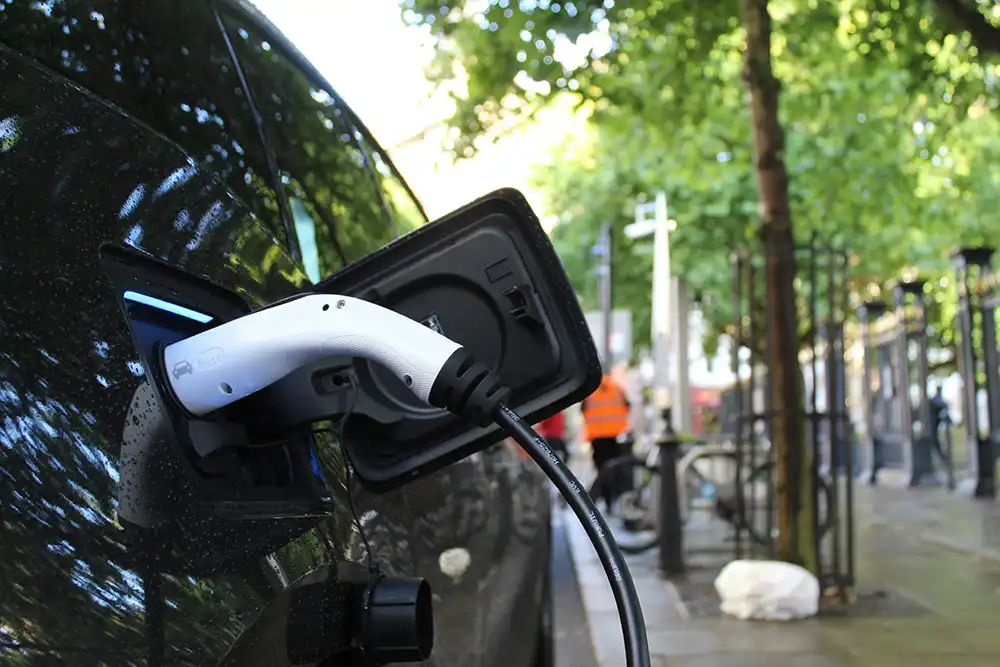
Greener, Cleaner Rides
Electric vehicles (EVs) aren't just a fad – they're ensuring our planet's future. The NES EV Program makes the transition easy, so you can save money in the long run and contribute to a lasting environmental impact.

It Pays to Go Electric
Did you know that there are financial incentives for EVs? Thanks to local power companies, state legislature and federal initiatives, several rebate and credit programs exist to save eco-conscious drivers money on clean vehicles and their equipment. Learn what incentives are available in your area.
Enphase EVSE Incentives
Enphase maintains a running list of incentives, on a federal level and by state, for homeowners and businesses who purchase EVSE.
Learn More


Federal Incentives
Cleaning up roads across America under the Inflation Reduction Act of 2022, the Clean Vehicle Credit (formerly the Qualified Plug-in Electric Drive Motor Vehicle Credit) was amended with a new requirement for final assembly in North America. The additional criteria has been in effect since Jan. 1, 2023, and those who own a qualifying clean vehicle may be eligible for a tax credit up to $7,500 through the IRS.
Learn more about the Clean Vehicle Credit
See if your EV qualifies
Powering A Less-Polluted Commute
Though conventional gasoline vehicles are becoming cleaner and other alternative-fuel vehicles can alleviate air pollution, EVs offer the greatest air quality benefits of any available technology. Battery EVs have exceptional air quality benefits such as reducing emissions of reactive organic gases, nitrogen oxides (the precursors to smog) and carbon dioxide emissions.

The average U.S. driver can save nearly $1,500 per year on fuel costs by switching to an EV, according to Great Plains Institute.
Two types of EVs
There are two types of EVs: the plug-in hybrid EV and the battery EV. Plug-in hybrids have both an internal combustion engine and a rechargeable battery, meaning they're powered by both gas and electricity. They first run on batteries charged from the electric grid and, once depleted (typically after 15-40 miles), the vehicle switches to the gasoline-fueled engine. Alternatively, battery-powered EVs run solely on batteries charged from the electric grid and do not use gas whatsoever.
Hybrid EV
Battery Powered EV
Steps to Going Electric
Are you and your electrical infrastructure prepared to support an EV? Follow these steps to find out.
-
Step 1
Decide on the make and model of your EV.
Your options include a plug-in EV, which uses both gas and electricity, or a battery EV, which runs solely on battery power.
-
Step 2
Review the charging options and choose the one that best meets your needs.
Plug-in hybrids charge on standard 120-volt outlets whereas battery EVs can charge on 120-volt outlet or a 240-volt rated charging unit.
-
Step 3
Evaluate the service transformer and grid infrastructure serving your home or business.
Contact NES at ev@nespower.com to ensure it can withstand EV charging.
-
Step 4
Evaluate your current electrical infrastructure to make any necessary upgrades.
A qualified licensed electrician can help you with this step. Several auto manufacturers also offer site assessments and supply equipment installation cost estimates.
Frequently Asked Questions
-
Well, for starters, EVs help improve our air quality in Nashville through the reduction of greenhouse gas emissions. However, another reason is because EVs help reduce our dependence on petroleum-based fuels, instead, your ride is powered by our grid.
What Could an EV Save You?
Use the EV Calculator to estimate how much you could reduce your monthly fuel costs and carbon dioxide emissions.
Calculate Your Savings
Choose How You Charge
Most EVs will charge at home on one of two charging levels. Learn what upgrades your home electrical system may need based on the level your EV requires.
See My Options